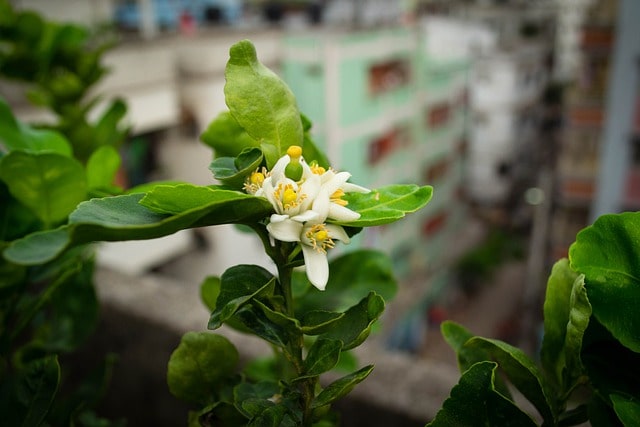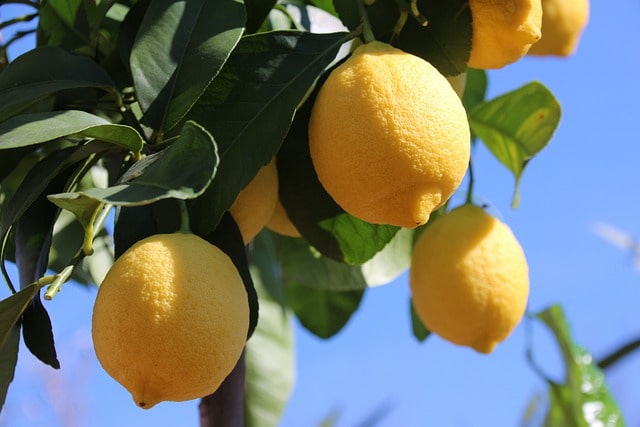When life blesses you with lemon, don’t forget to grow lemon from seed!
If you’ve witnessed the growth of a lemon tree, you’ll know why the growing lemon tree is not only productive but very exciting too! And if you haven’t, please allow me to make you understand! Lemon trees have dark green, lush, oval-shaped leaves that shimmer in bright sunlight. They have a glossy texture with beautiful white flowers that bloom with a soothing citrus fragrance and are unbelievably soft to touch.
Something is alluring about the exotic nature lemon trees provide, and finally, you get an exciting chance to get some juicy, tangy, and healthy fruits!
What Is the Best Time to Grow Lemon from Seeds?
Usually, lemon trees grow perfectly in year-round hot, outdoor climates with proper sunlight, but planting lemon seeds in winter isn’t a bad idea either. They can survive indoors as houseplants, and even in cold climates.
Lemon farming is surely a productive idea. You will also be giving an impressive sight of your lemon field to the people throughout the growing season!
Also Read: Farming Orange for a Perfect Citrus
What Are the Different Ways of Planting?
The growing lemon tree from root cuttings is the most preferred method, but unfortunately, cuttings are not always available in different parts of the world. But here is something exciting for you! The growing lemon tree from cuttings may take as many as 3 to 6 years until you get fruits, growing lemons from seed is surely extra rewarding.
You can grow a lemon tree from as little as six to eight germinated seedlings. And the best part is, germination takes place without much effort! And watching the plants growing is going to be a fascinating experience for you!
Here is a detailed, step-by-step guide to starting a growing lemon tree, right from the word go!
How to Grow Lemon Tree from Scratch?
Things You Will Need
Of course, you would want to have the healthiest lemon seeds to ensure proper, timely, and healthy growth of the lemon plants. Make sure you get an organic lemon because non-organic lemons usually have “duds” seeds and may be incapable of proper germinating.
- Organic lemon of any type will be suitable, but if you can get a specific variety called “Meyer” lemon, you will have the maximum productivity chances. Meyer lemons are smaller in size, often used for ornamental purposes, and suited for indoor and outdoor planting. The unavailability of Meyer lemon seeds is not the worst thing at all; you can purchase organic lemon of any variety, but of course, without compromising on the quality.
- Potting Soil: Any potting soil will be suitable for growing a lemon tree from seed. But for best results, you should use the soil with a blend of organic fertilizer, perlite, peat, and vermiculite. This type of soil is best suited for the growth of lemon trees, and the chances of productivity increase to a decent as well.

- Container: A 5-6 inches deep container with a few inches of diameter and drainage holes is usually enough for growing lemons from seed. Once the sprouts are visible, you will have to transfer the seedlings into a much bigger container. Mature lemon trees grow properly in wider rather than deeper containers.
So, we would recommend using a pot with 12-18 inches diameter and 10-16 inches depth. Your lemon tree will grow happily in the larger container for at least a few years; then, you would love to upgrade.
- Light: Lemon trees require a lot of sunlight for healthy growth. They need at least 10 to 14 hours of direct sunlight every day, especially while sprouting. You can get a grow light if you don’t have a window with constant sunlight. They are pretty affordable and will be proved very handy.
Method for Sprouting:
If you ask “how to grow your own lemon tree from seed,” this is the most important segment for you, because proper sprouting is a must if you want to see your lemon plant growing consistently.
Step 1:
Moist the potting soil before planting. Add some water to moisten the soil to ensure the soil is damp enough.
Step 2:
Add the soil to the container and leave some space (about one inch) below the container’s rim.
Step 3:
Cut the lemon and select a completely-grown seed. Take it into your mouth (Yes! 😉) and suck for a few seconds to remove the flesh and the tangy, lemon flavor. Keeping the seed inside your mouth until you are ready to plant is a good idea. The motive is to maintain the moisture throughout.
Step 4:
Plant the seed ½ inch below the soil level while both seed and the soil are moist.
Step 5:
Cover the seed properly with soil and water. You can use a watering can or squirt bottle for covering.
Step 6:
Use a breathable plastic to cover the container so that the seeds are moist and warm. You can use a clean garbage bag with multiple holes. Place the plastic securely over the container using a rubber band.
Step 7:
Grow lemon from seed perfectly, keep the container in a warm area, and observe continuously for a few days. Don’t forget that seeds require enough moisture and warmth for proper germination. Never allow the potting soil to get completely dry. Also, avoid “cooking” your seeds in the little greenhouse, because excessive heat isn’t suitable for lemon plants. Maintaining a nice temperature and moisture balance is very important. If you feel that the soil is warm enough, you don’t even need to cover it with plastic.
Step 8:
You will notice a few sprouts coming out of the soil after a couple of weeks. Once the sprouts are visible, remove the plastic (if it is still there), and place the little plant under plenty of direct sunlight. You can get some help from grow light if there is insufficient direct sunlight.
Step 9:
Here is another very important question: “How to care for a lemon tree.” Of course, it is a very important aspect if you want to see your plant growing without any barrier.
Here are some important caring tips:
- Water: Maintaining the dampness of soil is very, very important, especially when the tree is still young. You would like to avoid excessive accumulation of water, though, and of course, we’ve already talked about those drainage holes 😊.
- Sunlight: As discussed earlier, direct sunlight is a must throughout the growth of the lemon plant. Ensure placing the plant so that it can receive eight hours of direct sunlight every day or use a grow light in case there is dampness in the weather. Cities like Minnesota, Michigan, Alaska, Montana, etc. don’t get any sunlight in winter; hence if you are planting lemon seeds in winter, you must arrange a grow light for at least 10 hours.
- Food: If you want to keep your lemon plants healthy (you certainly would 😉), you will have to provide enough nutrition to the plants. We would suggest feeding your plants an organic fertilizer, like compost or vermicompost, especially once there are enough sets of leaves on the little branches.
How? You should dig a little trench around the plant base, fill it with compost, provide enough water, or use a compost tea. Feeding twice a year or as needed is recommended. Avoid overfeeding to ensure healthy and proper growth. Using as little fertilizer as possible is the best idea.
- Love: When it is about “how to care for a lemon tree,” keeping a few points in mind is very, very important. We would suggest you continuously look around your citrus friend, always have a track of its growth, feel the growth, talk to the plant, sing with it, and avoid dancing with it 😁! You should develop a habit of taking care of your lemon plants, keep an eye on the browning of leaves, check the underside of leaves to avoid pests. Just like you, your plants need proper care and love too! Your lemon plant may also get affected by bugs and diseases, and sometimes, may require extra care and love.
Once the plant is overgrown through the seedling pot, you would want to transfer it into a planting pot and ensure proper and timely watering. Older plants don’t require a lot of water, but maintaining the soil’s moisture is still a must.
You will have to be very patient with lemon plants, as they start producing fruits after the third year. And once the process of fruiting starts, you will be able to harvest them every year, especially if they get the right climate and soil conditions.
Once the plant starts blossoming (usually after two to two and a half years), you will have to wait four to twelve months before harvesting. And the time between summer and winter is the best for it.
So, that’s all about “how to grow a lemon tree from seeds.” Hopefully, you loved this guide, and there is no doubt in your mind anymore. Once there are lemons on your plants, harvest them, sell them, make lemon cupcakes, lemonade, and many other healthy and tangy recipes!
References:
https://www.farmersalmanac.com/grow-lemon-tree-from-seed-26627
https://growingwildceeds.wordpress.com/2012/03/10/how-to-grow-a-lemon-tree-from-seed/

